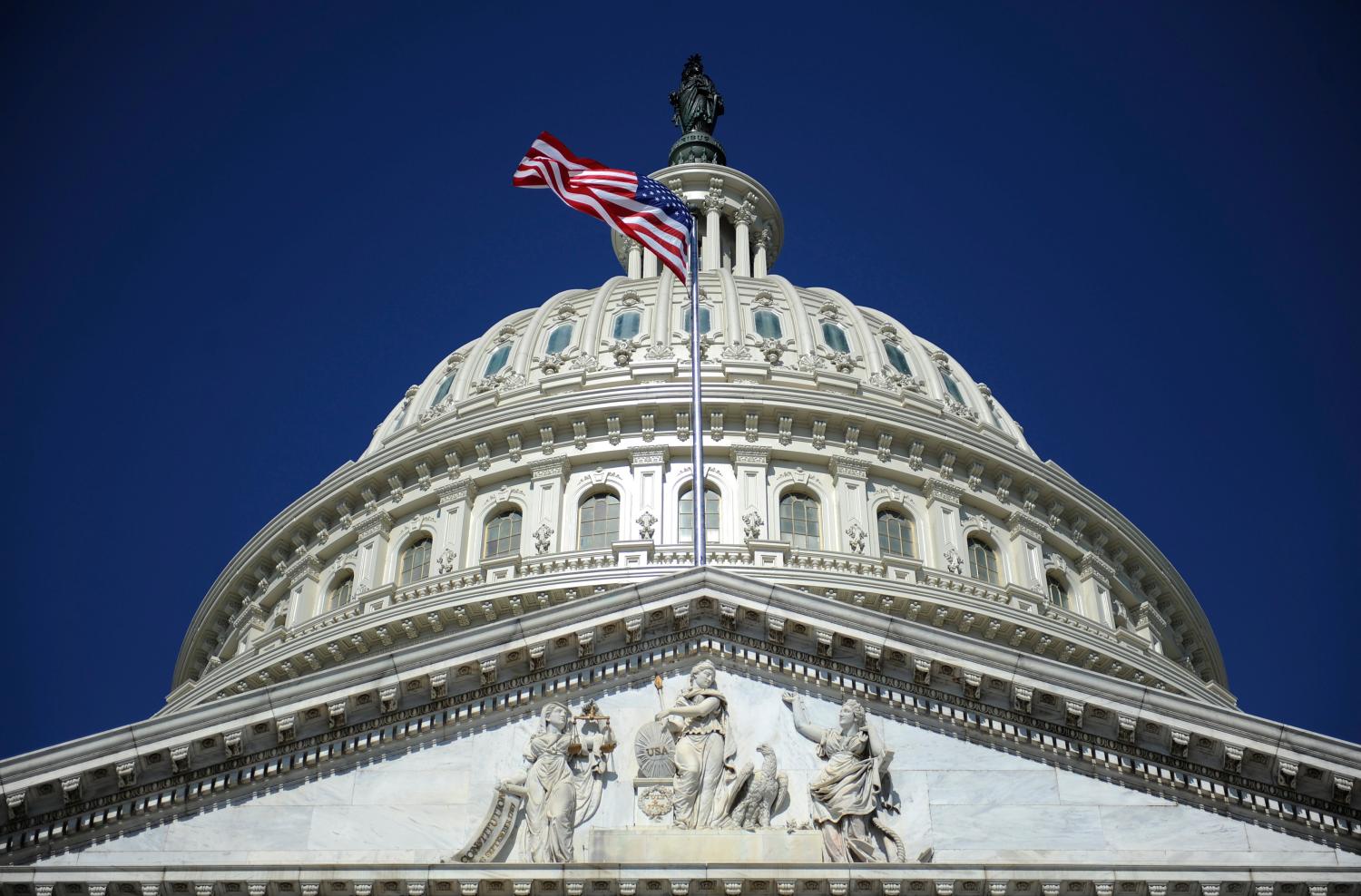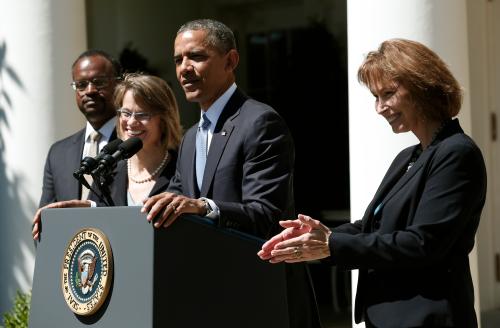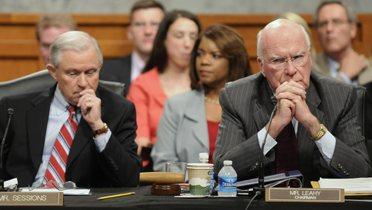Last week a Senate minority refused to permit Patricia Millet’s confirmation to the U.S. Court of Appeals for the District of Columbia Circuit, one more episode in the multi-year fight over President Obama’s judicial nominations. Another was last week’s House Judiciary Committee hearing on “Are More Judges Always the Answer?”—a question that answers itself.
The hearing rehashed claims and counterclaims that the D.C. circuit’s workload does or doesn’t merit filling its three vacancies, whether the current 50-50 party-of-appointing-president balance among the court’s eight active judges should or shouldn’t be disturbed, and whether Congress should enact Senator Charles Grassley’s bill (with 17 cosponsors, all Republican) to transfer two vacancies to other circuits and eliminate the third.
• Grassley is right that Congress needs “smart ways to reallocate our judicial resources” but wrong about what those “smart ways” are.
• Republicans are right that the three Obama nominations represent an effort to change the jurisprudential direction of the D.C. circuit, but wrong that the effort is unjustified.
• It’s true that Obama has by now outpaced President George Bush in the number of nominations, but that means less than meets the eye, because the nomination process appears stymied largely by home-state Republican senators.
Reallocating judgeships?
This is not the place to rehash the cherry-picked data bandied about in the House hearing, save to recognize that when President Bush proposed nominees to the D.C. circuit, the same pro and con arguments arose but from opposite sides of the aisle.
Senator Grassley’s statement was spot-on on one point, however—the need to find what he called “smart ways to reallocate our judicial resources”—in other words, to move judgeships from courts that need them less to courts that need them more. Congress has created no new appellate judgeships since 1990 and, during this era of clamped-down spending, is not likely to create more judgeships anytime soon.
The “smart way” to reallocate judgeships, however, is not a statistical food fight waged during partisan conflicts over judicial nominations, but rather a sophisticated, non-partisan analysis of the comparative workloads of the courts of appeals.
Despite claims by a witness at the House hearing and other commentators, the federal courts, as explained here, do not have a system of appellate case weights comparable to the case weights developed by the Federal Judicial Center for the district courts, which inform judicial branch assessments of district court judgeship needs. If Congress is serious about finding ways to reallocate appellate judgeships, it should ask the Judicial Conference, with the Center’s assistance, to try to develop an empirically based, conceptually grounded system for comparing appellate court workload that is more precise than the slightly adjusted raw filings now used as a guideline to inform the Conference’s assessment of appellate court judgeship needs.
Judicial Conference representatives have cited several methodological difficulties in establishing appellate case weights—for example, district cases of the same case-type can raise very different issues on appeal, and the need to respect courts’ different practices as to oral argument and opinion production and other procedures. They are right: developing valid comparative workload measures is a challenge, which renders even less compelling the dueling statistics that confirmation warriors invoke during confirmation wars.
Deciding whether to reallocate judgeships will need more than reliable comparative data. It will need senators who are willing to do it when those reliable data suggest that a reallocation among any of the 13 courts of appeals would be justified. It’s no coincidence that the 2009 transfer of a circuit judgeship from the DC to the Ninth Circuit –and the proposed transfer of two judgeships from the DC circuit to the Second and Eleventh—involve donations from one of the two courts of appeals that do not have a Senate delegation to protect its judgeships. Cosponsors of the Grassley bill might be less enthusiastic about a bill to move an appellate judgeship traditionally associated with their states.
Outcome-oriented nominations?
Another recurring charge at the House hearing was that Obama’s three pending nominations to the three DC vacancies represent, as one witness put it, “an attempt to tilt the outcomes of this court.” That’s right, but so what? Elections have consequences, and gradual shifts in the ideological orientation of the federal judiciary provide some democratic flexibility to an inherently undemocratic institution. Chief Justice William Rehnquist referred to the “right way to go about putting a popular imprint on the federal judiciary”—namely the nomination and confirmation of judges, during which both the popularly elected “President and the Senate have felt free to take into consideration the likely judicial philosophy of any nominee to the federal courts.” (Rehnquist was speaking in 1996, in the twilight of the era when senators gave deference to a president’s judicial nominees except in extreme cases.)
Nominee-less vacancies?
Some argued in the hearings that before pushing nominees for a court they say needs no more judges, Obama should get nominees in place for the over 50 vacancies without nominees.
Here again the picture is more complicated than it appears. Some observers have noted that “Obama, after an extraordinarily slow start, has moved way ahead of Bush II on nominations”— true but imprecise. The administration’s pace has increased, but the comparison to Bush in the fifth year of their respective presidencies is misleading, because nominations almost stopped in 2005. Of Obama’s 269 judicial nominations, 20% have come in 2013 (and 76% of the 269 have been confirmed). Of Bush’s 242 nominations as of November 1, 2005, only 6% came in 2005 (with an 89% overall confirmation rate). (Of Clinton’s 283 nominations as of Nov. 1, 1997, 17% came in 1997—with a confirmation rate of 78%.)
Why the still-sluggish pace of nominations, given the high number of vacancies? The answer isn’t clear but the numbers are: to find a nominee-less vacancy, look to states with Republican senators.
Consider the 31 district vacancies that were announced or—if no advance announcement—were created before May 1, 2013 (i.e., eliminating newly created or announced vacancies from the analysis).
• 15 are in states with two Republican senators, 13 in states with one Republican senator, and two in states with two Democratic senators.
• the average length of the vacancies in two-Republican senator states is 692 days, 370 days in one-Republican senator states; in the states with two Democratic senators, one vacancy is 200 days old, the other 701 (the only one of the five California vacancies without a nominee).
• Of the 15 nominee-less vacancies in states with two Republican senators, two thirds are in Texas and Georgia—seven in Texas (average age of 897 days) and three in Georgia (ranging from 540 to 672 days). The four Texas districts are in special need of judges; in terms of weighted filings per judgeship, two rank in the top ten nationally, two in the top 25.
• 11 of the nominee-less vacancies are “judicial emergencies” according to criteria established by the Judicial Conference; six are in two- Republican senator states, four in split-delegation states. The other is the 701-old vacancy in California.
Of the four circuit vacancies more than six months old and with no nominees, two are in Texas and one is in Georgia, ranging in age from 518 to 945 days. The fourth vacancy is in split-delegation Wisconsin, with 1,037 days since a previous nomination died. All four are judicial emergencies.
Time from vacancy to nomination shows, as expected, the reverse side of the nominee-less vacancy picture. Average days from vacancy announcement to nomination for the 39 nominees in two-Republican senator states was 445 days; 424 days for the 56 nominees in split-delegation states; 384 for the 111 nominees in states with two Democratic senators (and 402 for the eight nominees to districts that have no senators).
Average days for 15 circuit nominees in two-Republican senator states was 374, 224 for seven split-delegation state nominees, and 268 for 20 nominees in two-Democratic senator states (195 without the 1,654 days to nominate a successor to a Ninth Circuit judge , the result of a long-standing stalemate between the California and Idaho senate delegations). (Twelve nominees to the DC and Federal circuits took an average of 293 days.)
Although one on the outside cannot say definitively, these patterns (similar to those observed last April) suggest that Republican senators are, on an unprecedented scale, objecting to nominees floated by the administration, insisting on nominees unacceptable to the administration, or simply slow-walking the process—and threatening to exploit their ability to deny hearings to nominees from their states if the administration nominates someone to whom they object.
The takeaway?
Suffice it to say, whatever easing of contentiousness may be occurring in Washington, it hasn’t affected, and is unlikely to affect, the process of putting (or not putting) judges into vacancies. And, if a Republican wins the White House in 2016, it’s hard to imagine Democratic senators’ letting bygones be bygones, and the federal courts will continue to pay the price.
The Brookings Institution is committed to quality, independence, and impact.
We are supported by a diverse array of funders. In line with our values and policies, each Brookings publication represents the sole views of its author(s).












Commentary
Federal Judicial Nominations: Skunky D.C. Stats, Justified Ideological Nominations, Vacancies Without Nominees
November 4, 2013